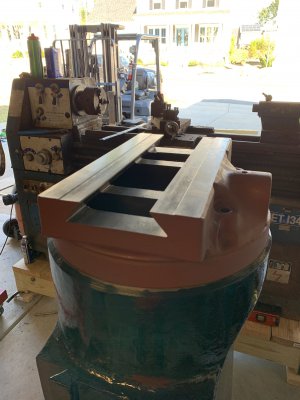Hi,
My lathe is a hundred years old and didn't have any electrical with it other than a switch for the motor so I can't give you specifics. I changed over to a 3 phase motor and now have speed control but am not really using any other VFD functions.
It looks like your lathe is a relatively modern design so I assume it originally had a power switch, reversing switch, E-stop, etc. All these functions can be programmed with a VFD and a little effort. Changing to a 3 phase really just requires a motor with the right frame size and power, you want a 220v unit, not 440v or anything strange and a VFD to match. There is much discussion about the cheap Chinese units vs. more expensive brand names but either will provide power and basic programming functions. Hooking one up does require "tuning" it to your specific motor and wiring some kind of control box but it really doesn't have to be more complex than a power switch and a potentiometer for speed control, you can even do this from the built in control panel on most units. An e-stop with a braking resistor is a good safety feature but won't keep you from using the lathe.
While it's nice to use the original switches it's not strictly necessary. You will need to discover any interlocks that need to be incorporated or disabled to use your machine so having an original wiring diagram will be helpful. Manufacturers put controls where they think most users want them but sometimes other arrangements might work better for you, if you're not familiar with basic lathe operations it's helpful to read the South Bend "how to run a lathe" book or another text so you can get a feel for what controls do what.
What happened to the controls that you are needing to replace stuff? Did someone burn them up or remove them before you got the machine? Post some pictures so we know what you're working with, it might be that you can fix what you have rather than replacing it. If you can wire a house you'll be able to figure this stuff out, just takes time.
All this presupposes that your machine is in decent shape to begin with, there's no sense in putting money and time into something so far gone that it'll never work right. Some history for your machine might give a better idea of where to start.
Cheers,
John



